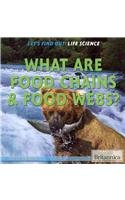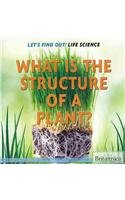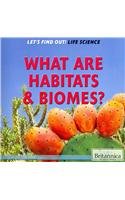-
What Are Fish?
Bobi Martin
Paperback (Britannica Educational Pub, Jan. 1, 2017)Many animals live in water, but only some can be defined as fish. Twenty-eight thousand species of fish exist, each with different characteristics. Readers from grades one through four will learn that fish have a distinct impact on their ecosystem and will see how fish survive when well-adapted to an uncompromised environment. Beautiful photographs demonstrate the great diversity of fish and accompany intellectually stimulating explanations of their varying roles and traits. From page to page, what a fish is unfolds in vocabulary call-outs, insightful questions, and relatable compare-and-contrast examples. N
N
-
Sharks Have Six Senses
John F Waters, Bob Barner
Paperback (HarperCollins, May 12, 2015)In the ocean, sharks are near the top of the food chain. Sharks have the same five senses as humans do, but they have an extra sixth sense that makes them especially deadly hunters. What is this sense and how does a shark use all six senses to track down prey? Read and find out! With colorful illustrations from Bob Barner and engaging text from John F. Waters, Sharks Have Six Senses is a fascinating look into one of the most powerful predators in the sea. This nonfiction picture book is an excellent choice to share during homeschooling, in particular for children ages 4 to 6. It’s a fun way to learn to read and as a supplement for activity books for children.Featuring rich marine-biology vocabulary bolded throughout the text, this book also includes a Find Out More section with additional shark facts and web research prompts about shark conservation efforts. Both the text and the artwork were vetted for accuracy by Dr. George H. Burgess, director of the Program for Shark Research at the Florida Museum of Natural History.This is a Level 2 Let's-Read-and-Find-Out, which means the book explores more challenging concepts for children in the primary grades and supports the Common Core Learning Standards and Next Generation Science Standards. Let's-Read-And-Find-Out is the winner of the American Association for the Advancement of Science/Subaru Science Books & Films Prize for Outstanding Science Series. P
P
-
What Makes a Magnet?
Dr. Franklyn M. Branley, True Kelley
Hardcover (HarperCollins, Feb. 2, 2016)Why does a magnet pick up a paper clip but not a leaf or a penny? How can the whole world be a magnet? Follow the step-by-step instructions about how to make your own magnet, and then find out for yourself what makes a magnet! This nonfiction picture book is an excellent choice to share during homeschooling, in particular for children ages 4 to 6. It’s a fun way to learn to read and as a supplement for activity books for children. L
L
-
What Are Food Chains & Food Webs?
Louise Spilsbury
Paperback (Britannica Educational Pub, Jan. 1, 2014)This book explains the transfer of energy between living thingsknown as the food chainin a way that allows any reader to grasp the scientific principles behind food chains and food webs. The diets of herbivores, carnivores, and omnivores are explained, as well as other types of diets, and the flow of energy between these groups is made clear with arrowed diagrams and colorful pictures that show where different species derive their energy. Also examined are the effects different habitats have on the food chain, and how food chains in different environmental regions can be contrasted. U
U
-
Mission to Mars
Dr. Franklyn M. Branley, True Kelley
Paperback (HarperCollins, Sept. 3, 2002)Someday people from Earth may live on Mars. In this century, we will go to the planet to learn more about it. It will become our outpost in space—our space colony. This nonfiction picture book is an excellent choice to share during homeschooling, in particular for children ages 5 to 7. It’s a fun way to learn to read and as a supplement for activity books for children.The author-illustrator pair who brought us THE INTERNATIONAL SPACE STATION, FLOATING IN SPACE, and WHAT THE MOON IS LIKE tackle the new hot topic in space—a mission to the red planet.This is a Level 2 Let’s-Read-and-Find-Out Science title, which means the book explores more challenging concepts for children in the primary grades and supports the Common Core Learning Standards, Next Generation Science Standards, and the Science, Technology, Engineering, and Math (STEM) standards. Let’s-Read-and-Find-Out is the winner of the American Association for the Advancement of Science/Subaru Science Books & Films Prize for Outstanding Science Series. O
O
-
What Is the Structure of a Plant?
Louise Spilsbury
Paperback (Britannica Educational Pub, Jan. 1, 2014)Describes the basics of plant anatomy, including stems, leaves, flowers, seeds, and bulbs. L
L
-
Sid the Science Kid: A Cavity Is a Hole in Your Tooth
Jodi Huelin
Paperback (HarperFestival, March 23, 2010)Let's-Read-and-Find-Out About TeethHave you ever wondered what would happen if you never brushed your teeth? Why do you need your teeth to be strong and hard? Read and find out all about teeth with Sid the Science Kid! G
G
-
Dinosaur Babies
Kathleen Weidner Zoehfeld, Lucia Washburn
Paperback (HarperCollins, Aug. 25, 1999)Did dinosaur parents protect their young? Or were the babies left on their own in a world of giants? In a fresh new look at an always-popular subject, Dinosaur Babies reveals the latest discoveries about the lives of the littlest dinosaurs. Learn how to make your own fossil on the "Find Out More" page! P
P
-
Did Dinosaurs Have Feathers?
Kathleen Weidner Zoehfeld, Lucia Washburn
Paperback (HarperCollins, Dec. 23, 2003)Did dinosaurs have feathers? Birds have feathers, but did you know some dinosaurs did too? New fossils have shown that as long as 145 million years ago, some dinosaurs had feathers, just as birds do. The birds you see outside your window are relatives of these ancient creatures. This nonfiction picture book is an excellent choice to share during homeschooling, in particular for children ages 5 to 7. It’s a fun way to learn to read and as a supplement for activity books for children.This Stage 2 LRFO explores the link between dinosaurs and birds and examines how flight evolved. From the team that created the best-selling Dinosaur Babies.This is a Level 2 Let’s-Read-and-Find-Out Science title, which means the book explores more challenging concepts for children in the primary grades and supports the Common Core Learning Standards, Next Generation Science Standards, and the Science, Technology, Engineering, and Math (STEM) standards. Let’s-Read-and-Find-Out is the winner of the American Association for the Advancement of Science/Subaru Science Books & Films Prize for Outstanding Science Series. O
O
-
What Happens to Our Trash?
D. J. Ward, Paul Meisel
Paperback (HarperCollins, Jan. 24, 2012)People in the United States make more trash per person every day than people in any other country. What do we throw away, and where does it go? How can we reduce, reuse, and recycle? Read and find out! This nonfiction picture book is an excellent choice to share during homeschooling, in particular for children ages 5 to 7 who are ready to read independently. It’s a fun way to keep your child engaged and as a supplement for activity books for children.This is a Level 2 Let's-Read-and-Find-Out Science book, which means the book explores more challenging concepts perfect for children in the primary grades and supports the Common Core Learning Standards and Next Generation Science Standards. Let's-Read-and-Find-Out is the winner of the American Association for the Advancement of Science/Subaru Science Books & Films Prize for Outstanding Science Series. M
M
-
Fossils Tell of Long Ago
Aliki
Paperback (HarperCollins, March 21, 1990)What is a fossil? Sometimes it's the imprint of an ancient leaf in a rock. Or it could be the skeleton of a dinosaur that has turned to stone! With clear prose and lovely, full-color illustrations, award-winning author and illustrator Aliki describes the different ways fossils are formed and what they tell us about life on Earth long ago. This book also includes an activity guide so kids can create their own fossils for someone to find a million years from now.This is a Stage 2 Let's-Read-and-Find-Out, which means the book explores more challenging concepts for children in the primary grades. Let's-Read-And-Find-Out is the winner of the American Association for the Advancement of Science/Subaru Science Books & Films Prize for Outstanding Science Series. Supports the Common Core Learning Standards and Next Generation Science Standards O
O
-
What Are Habitats & Biomes?
Louise Spilsbury
Paperback (Britannica Educational Pub, Jan. 1, 2014)Describes the different types of biomes on Earth, from oceans and rivers to grasslands and scrublands. T
T